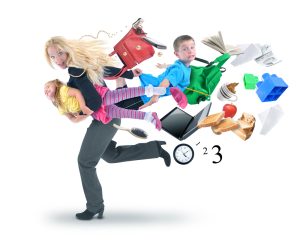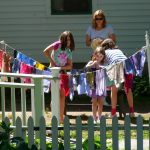Natural Consequences and the Implications For You and Your Child
Wake up. “Hurry up and get ready or else you are going to be late for school!” Start to get dressed. “It’s cold outside. Put on your purple sweater!” Go downstairs for breakfast. “Finish your toast. You are going to get very hungry if you don’t!” Pack up for school and see the toy pull ed out of your backpack. “I don’t want this getting lost at school! We’re going to leave it at home.” Out the door.How do you feel after reading that? Did it make you feel stressed, anxious or discouraged? This is an example of what can often be a very typical start to the day for many families. If you grew tired of hearing this onslaught of instructions, reminders and demands, imagine how a child would feel? And this is all occurring before they actually even get out the door to start their day. Can you imagine a child being able to handle constant hovering throughout their entire day? Would you be able to?
ed out of your backpack. “I don’t want this getting lost at school! We’re going to leave it at home.” Out the door.How do you feel after reading that? Did it make you feel stressed, anxious or discouraged? This is an example of what can often be a very typical start to the day for many families. If you grew tired of hearing this onslaught of instructions, reminders and demands, imagine how a child would feel? And this is all occurring before they actually even get out the door to start their day. Can you imagine a child being able to handle constant hovering throughout their entire day? Would you be able to?
This is where the idea of natural consequences comes into play. A natural consequence occurs without any involvement from the parent. This means that from the choices and actions that a child makes, they may have to face consequences from another person, society or even nature. Many parents can probably relate to the feeling of “sounding like a broken record.” When we are constantly in the habit of making children’s decisions for them, we do not give them a chance to learn for themselves. Cause and effect is something that children should naturally begin to learn at a young age. When children are allowed to make a choice and deal with the subsequent consequence, they can develop coping skills, logic and reasoning, problem-solving and resiliency.
If we look at our “typical morning” again, we can see how applying natural consequences can create important teaching moments for that child. For example, the child refuses to get out of bed on time. A natural consequence could be missing out on an activity that already started at school. The child chooses to wear a shirt instead of a sweater. A natural consequence may be feeling very cold and unhappy during outdoor play. The child does not want to eat or finish their breakfast. A natural consequence may be hunger and frustration for having to wait until the next snack break to eat. The child brings their toy to school. A natural consequence could be that it gets lost or broken.
In all of these instances, the child is allowed to make their own choices and inevitably, their own mistakes. As the age-old saying goes, how are children supposed to learn and grow independence if they are not given the opportunities to “learn from their mistakes?” An important thing to remember when utilizing natural consequences is that the consequence must be something that will be undesirable to your child in particular. For example, if the cold does not bother your child, they may not care that they did not dress for the weather. It is also crucial to practice follow-through when teaching natural consequence. For example, if your child is upset that the toy they brought to school got broken and you just go out and replace it, the child will not learn from their actions.
The idea of natural consequences can be an effective and powerful teaching tool. When choosing when to step back and use them, make sure it will be meaningful to your child. This strategy can help set them on the right path for autonomy and help children learn how to make good choices.
photo credit: DSC_2017 res via photopin (license)
– Written By: Mary Ngo, RECE









